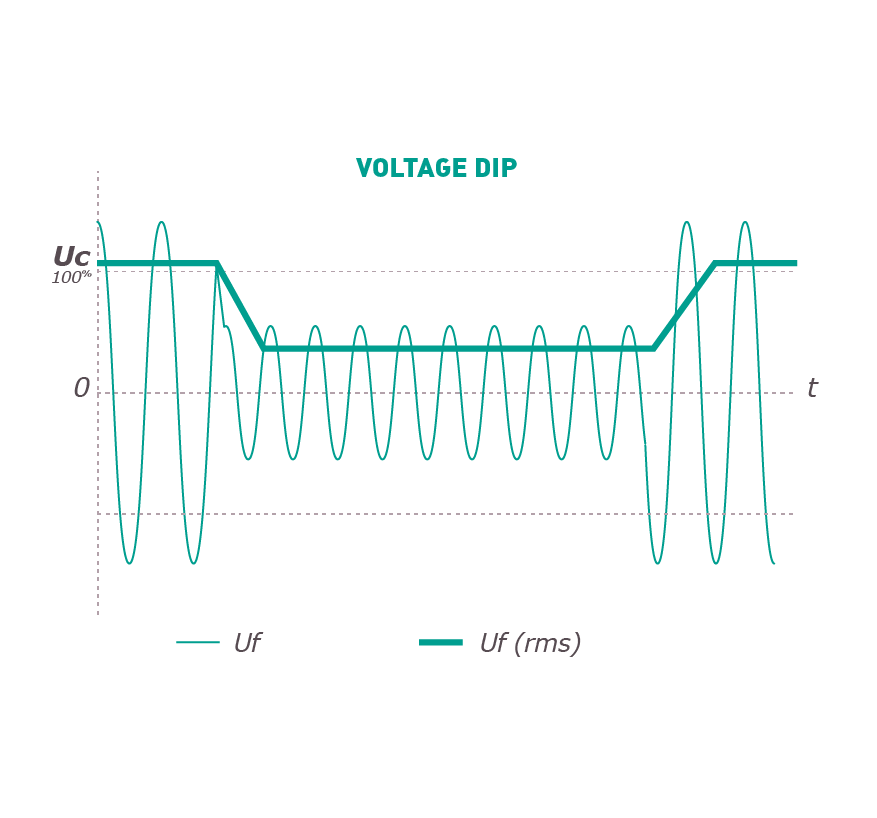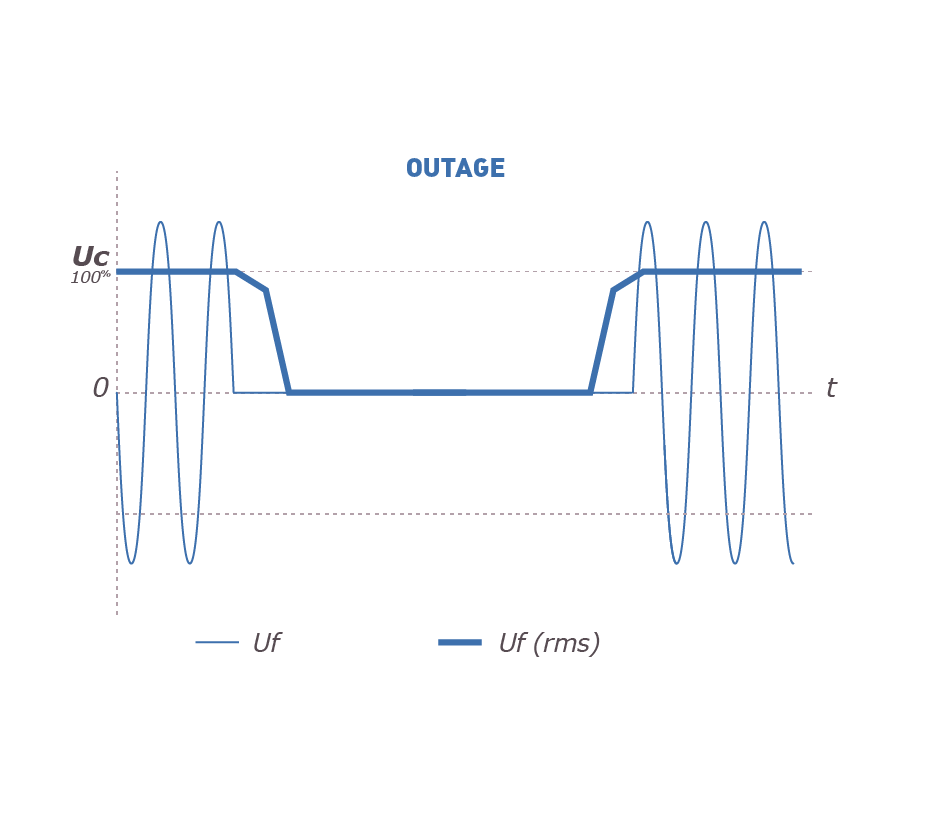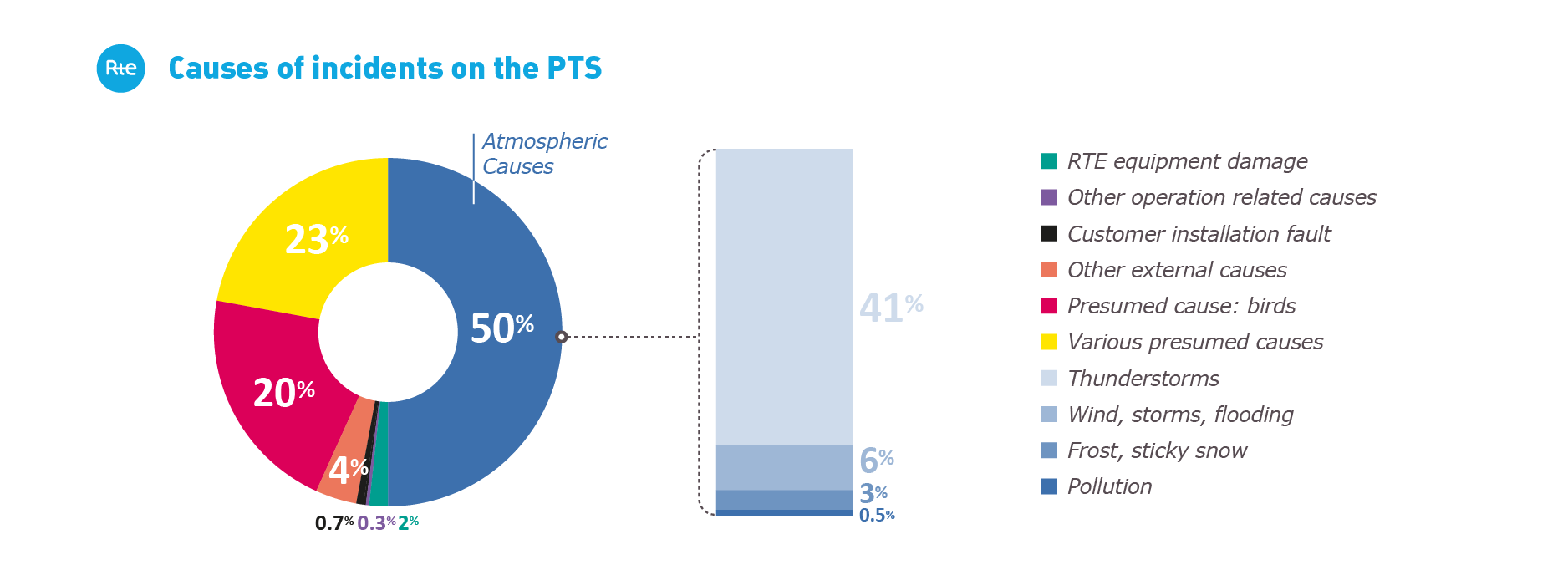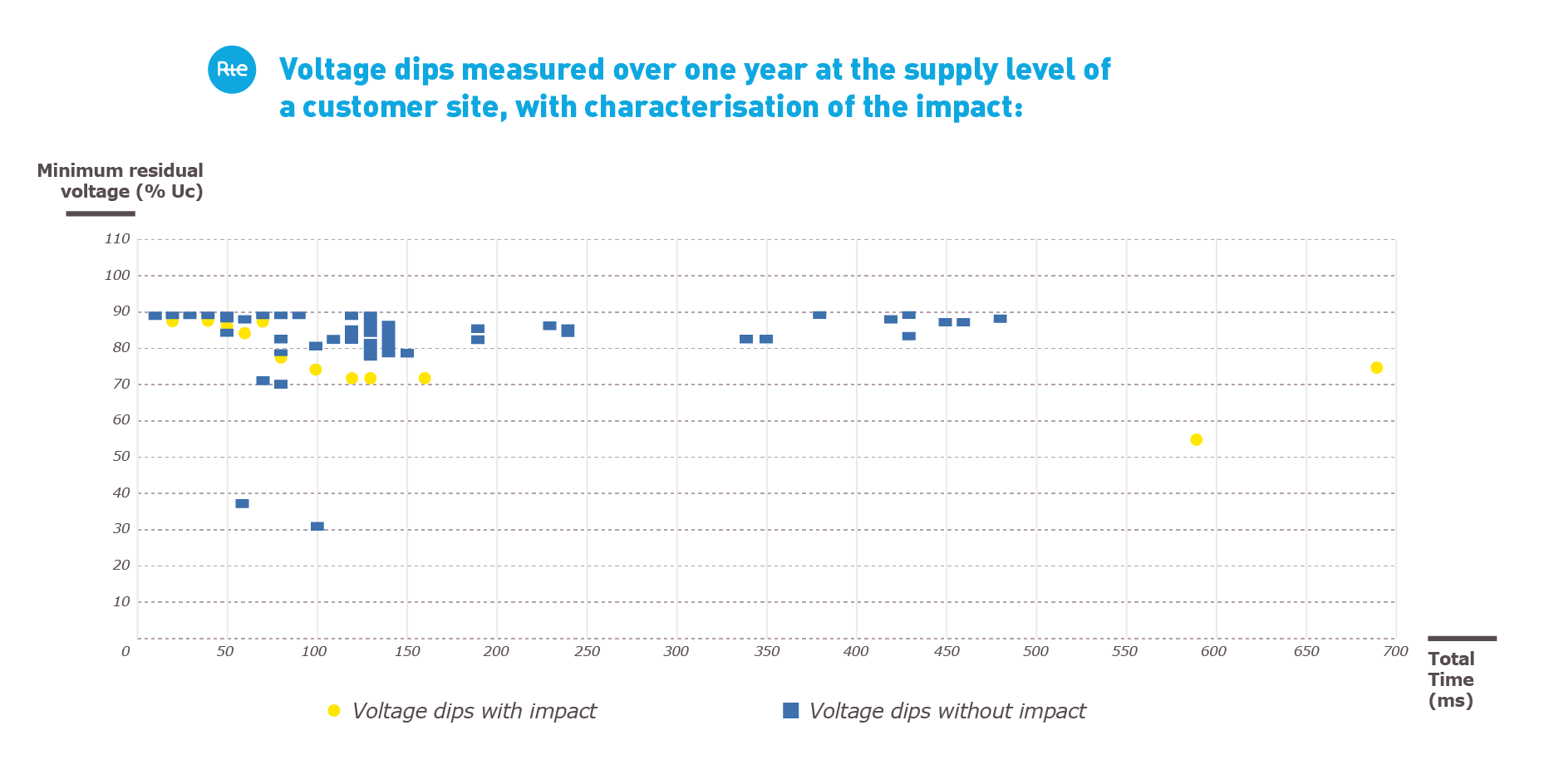Do you have an account?
Why create an account?
After creating an account you will :
- have access to the “favourites” feature,
- be able to download certain data published by RTE,
- have access to forms (PKI certificate, EIC code, Customer questionnaire - KYC),
- have access to notifications.
If you are an RTE customer, feel free to contact your administrator so that he or she can give you access to your company’s services.
+ RTE provides information on voltage dips to help you better identify them and differentiate them from outages
Beneficiaries
- Consumers
- Distributors
- Generators
What is a voltage dip?
A voltage dip occurs when there is a temporary drop in the supply voltage (Uf) below a threshold set at 90% of the declared supply voltage (Uc).
On a polyphase system, a voltage dip begins when at least one of the voltages falls below the threshold and ends when all the voltages are equal to or above the threshold.
A voltage dip is characterised by:
- Its depth (relative deviation from Uc), which can vary over time, on each voltage. It is also referred to as residual voltage (minimum voltage reached on at least one of the voltages).
- Its duration: from a few dozen to a few hundred milliseconds, rarely more than 1 s.

Although a voltage dip may in some cases cause a process to stop, it is not an outage.
What is an outage?
An outage occurs when the rms values of all voltages are simultaneously less than 5% of Uc.
An outage is characterised by its duration:
- long outage > 3 min
- short outage between 1s and 3 min
- very short outage < 1 s.

The cause of voltage dips
Almost all incidents result in a short circuit on a network element. This short circuit causes the circulation of high currents between the voltage sources and this fault, with a physical phenomenon of voltage drop on the network that will last until the elimination of the short circuit (switching off the defective facility).
This momentary drop is a voltage dip, the depth of which depends on the type of short circuit (much greater depth for a polyphase short circuit than for a single phase) and the proximity of the short circuit to the customer installation.
The origin (each short circuit) and the nature of the voltage dips (voltage drop experienced by all customer sites up to several dozen or hundreds of kilometres around the fault) make it the most common type of disturbance seen by customers:
On average, the power supply to a customer site undergoes less than one long outage every 10 years, less than one outage per year regardless of its length in time (long, short or very short), whereas it may be subject to 1 voltage dip every 10 days.
The origin of short circuits on the network

NB: The RTE network suffers on average close to 8000 short circuits per year
Our actions in favour of reducing voltage dips
The main levers for improving electricity quality are to reduce the occurrence of disturbances and/or to reduce their amplitude and duration. For voltage dips, RTE strives to:
- reduce the number of short circuits by taking actions to improve reliability of the facilities against the most common causes (lightning, birds…)
- eliminate short circuits faster by improving protections, in order to reduce the duration of voltage dips
- limit the propagation of voltage dips by adapting, where possible, the network operating patterns.
Your contribution to the desensitization of dips
The majority of voltage dips are of limited depth and duration and are not felt by most customers. However, some industrial consumers are sensitive to voltage dips.
Sensitivity depends on the nature of the process and the means of desensitization implemented at the facility to improve its immunity from disturbance or mitigate its consequences.
Optional additional services relating to power quality: Voltage Quality + (Q+) and Sup Quali+
The Voltage Quality + service is a service that any customer can subscribe to via an additional services contract.
It consists of monitoring power disturbances using a quality measuring device (installed and managed by RTE). It also enables a cross-analysis of voltage dips, identifying the origin on the network and identifying their consequences on the customer’s installation. The objective is to enable targeted actions to improve the network and/or desensitization of its installations by the customer.

It includes a commitment on the number of voltage dips exceeding 30% depth more than 400 ms.
The Sup Quali + service is a service for customers who have made efforts to desensitize their installation.
This service offers enhanced commitment, taking into account voltage dips that exceed 45% depth for 20ms, or 30% depth for 200ms, or 20% depth for 500ms.
Access the service subscription terms on “Power Quality: Voltage Quality+ and Sup Quali+"
Reference documentation
For further information, please access to the library to read following documents:Consumer CART (Transmission System Access Contract)
- Consumer CART (Transmission System Access Contract)
- CART distributor
- DSO CART
Contact(s)
For subscriptions or information, please contact your usual account manager or the generic email address of the customer service department for your geographical area
Additional information
Annual reports on electricity quality | RTE (rte-france.com)
Modes of access to electricity quality monitoring
Online information about disturbances, voltage dips and related commitments can be accessed via the dedicated service on this website (section My services).
